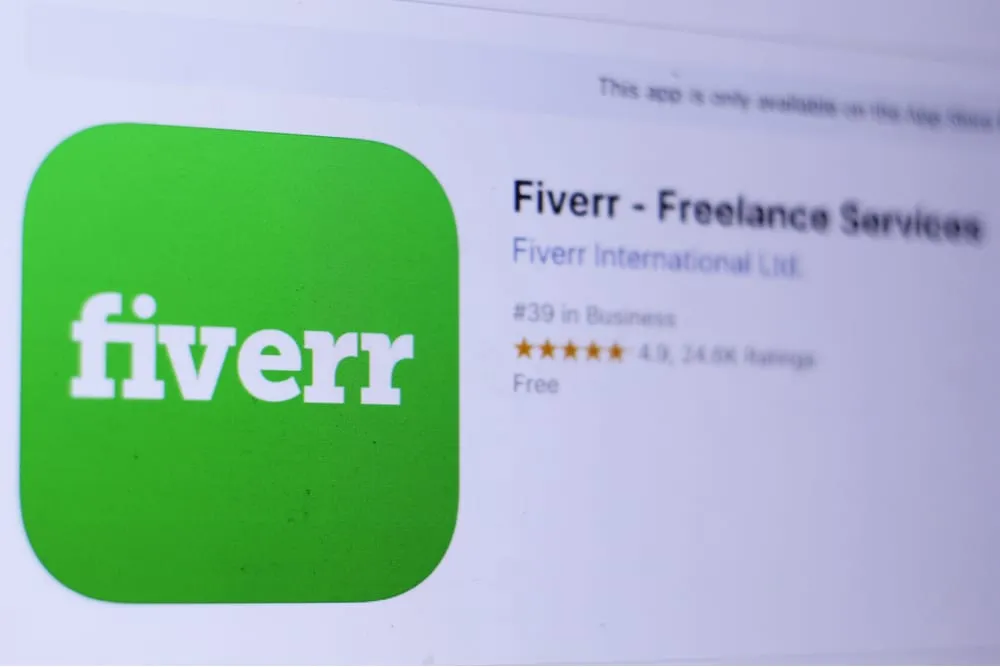Have you ever wondered if Fiverr, the popular marketplace for freelancers, is publicly traded? It's a great question, especially as freelancing continues to gain traction in today's job market. Knowing whether Fiverr is publicly traded can help you understand its business model, growth potential, and overall standing in the market. Let’s dive deeper into this intriguing topic and peel back the layers of what Fiverr is all about.
Overview of Fiverr

Fiverr was founded in 2010 and has since become a leading platform for freelancers and clients to connect. The premise is simple; it allows freelancers to offer services, or "gigs," across a wide array of categories, ranging from graphic design and writing to programming and digital marketing. Here are some key points that capture what Fiverr is all about:
- Wide Range of Services: Fiverr hosts millions of gigs across various fields, making it a versatile platform for different industries.
- User-Friendly Interface: Fiverr's design is straightforward, making it easy for both freelancers and clients to navigate.
- Rating System: Freelancers are rated based on their performance, which helps clients make informed decisions.
- Global Reach: With users from all corners of the globe, Fiverr enables freelancers to work with clients regardless of geographical boundaries.
- Competitive Pricing: Services can start as low as $5, providing entry-level options for clients looking for affordable solutions.
Add to that, Fiverr has become more than just a gig marketplace; it’s a thriving ecosystem for entrepreneurial talent. The platform not only empowers freelancers to monetize their skills but also helps businesses find the specific talent they need to grow. As for its business strategy, Fiverr relies on a commission-based model where it earns a percentage of each transaction. This structure positions the company well in the rapidly evolving freelance economy.
Also Read This: Where to Advertise My Fiverr Services: A Comprehensive Guide
3. History of Fiverr

Fiverr was born in 2010, when it was founded by Micha Kaufman and Shai Wininger. The idea was simple yet revolutionary: to create a platform where freelancers could sell their services, with prices starting at just $5. The aim was to democratize access to freelance talent and make it easier for small businesses and individual entrepreneurs to get help without breaking the bank.
In its early years, Fiverr gained significant traction among both freelancers and buyers. By providing a user-friendly platform, it enabled service offerings in various categories, such as graphic design, writing, programming, and marketing. This quick accessibility attracted a global user base, allowing freelancers to connect with customers from all around the world.
Fiverr continually evolved, adding features that enhanced user experience. They introduced levels for sellers based on performance, providing incentives for freelancers to deliver high-quality services. Moreover, the platform updated its interface and offered a mobile app to cater to the rising demand for freelance services on-the-go.
Over the years, Fiverr embraced technological advancements, incorporating AI-driven tools and resources to match freelancers with specific demands efficiently. Through various marketing campaigns, Fiverr further positioned itself as a go-to marketplace for freelance services, successfully navigating the ups and downs of the gig economy along the way.
With millions of services listed and growing awareness about remote work, Fiverr continues to adapt and innovate, making it a staple in the freelancing world.
Also Read This: Does the Buyer Have to Pay a Fee on Fiverr?
4. When Did Fiverr Go Public?

Fiverr took a monumental step in its journey when it went public on June 13, 2019. The company chose to list on the New York Stock Exchange under the ticker symbol "FVRR," marking a significant milestone in its quest for growth and expansion.
Prior to its IPO, Fiverr had been steadily increasing its user base and revenue, demonstrating strong potential in the gig economy. The initial public offering offered investors a chance to participate in a marketplace that not only catered to freelancers but also resonated with a global audience eager for affordable and diverse services.
Here are some important points regarding Fiverr's IPO:
- Initial Share Price: Fiverr priced its shares at $21 each for the IPO.
- First Day Performance: On the first day of trading, Fiverr's stock price jumped by approximately 90%, closing at around $39.90.
- Market Confidence: The successful debut showcased strong investor confidence in the gig economy and Fiverr's ability to capture a significant market share.
Since going public, Fiverr has continued to focus on expanding its platform and enhancing user experience, aiming to solidify its position as a leader in the freelance services industry. Investors often watch Fiverr closely to gauge trends in the gig economy and the ongoing demand for freelance work.
Also Read This: How Long Does It Take for Your Fiverr Gig to Get Listed?
5. Stock Performance and Market Trends
The stock performance of Fiverr has been a topic of interest since its initial public offering (IPO) in June 2019. Initially, the company debuted at a price of $21 per share, generating excitement among investors. Over time, Fiverr's stock saw ups and downs reflective of broader market trends and company-specific developments.
In the early days following its IPO, Fiverr experienced a surge in its stock price, driven by optimism surrounding the gig economy's growth. For instance, during 2020 and 2021, as remote work became the norm due to the pandemic, Fiverr's services became more relevant. This resulted in robust demand and consequently, a notable increase in its stock value.
However, the stock market is notoriously volatile, and Fiverr was not immune to this. The company faced fluctuations influenced by various factors, including changes in investor sentiment, competition from other freelance platforms, and larger economic conditions. It's essential to note that these market trends are often interconnected with technology sector performance as a whole.
Here’s a brief overview of Fiverr's stock performance since its IPO:
| Year | IPO Price | Current Stock Price | Key Events Impacting Price |
|---|---|---|---|
| 2020 | $21 | ~$30 | Pandemic boosts remote work demand |
| 2021 | $21 | ~$90 | High demand continued, strong revenue reports |
| 2022 | $21 | ~$45 | Market correction begins |
| 2023 | $21 | Check latest price | Focus on long-term growth strategies |
Investors looking to engage with Fiverr stock should consider these historical performance trends and myriad factors influencing its current and future market valuation. It's always good practice to stay informed on the company's quarterly earnings reports and press releases for the latest updates.
Also Read This: Accurate Assessments: Unveiling the Reliability of QuillBot’s Plagiarism Checker
6. Benefits of Fiverr Being Publicly Traded
Fiverr's decision to go public has brought several advantages not only to the company but also to its stakeholders. Investing in a publicly traded company like Fiverr comes with a mix of opportunities and responsibilities. Here’s why being publicly traded is beneficial for Fiverr:
- Access to Capital: One of the most significant benefits of going public is the access to capital markets. By issuing shares to the public, Fiverr has been able to raise substantial funds. This financial boost has allowed the company to invest in marketing, expand its platform, and innovate new features that enhance user experience.
- Increased Visibility and Credibility: As a publicly traded entity, Fiverr enjoys enhanced credibility in the eyes of both consumers and potential clients. The scrutiny of public markets often leads to greater transparency and accountability, which can build trust with users.
- Ability to Attract Talent: Publicly traded companies can offer stock options as part of their employee compensation packages. This not only helps in attracting top talent but also motivates employees to perform better because they have a stake in the company’s success.
- Market Valuation Insight: Being public gives Fiverr a clear market valuation, which can help inform business decisions. Regular assessments of stock price provide insight into how the market perceives the company’s growth potential and competitive advantages.
- Strategic Acquisitions: With its public status and the capital reserves available, Fiverr can pursue strategic acquisitions to enhance its offerings or to enter new markets. Such moves can often lead to accelerated growth.
In conclusion, Fiverr's status as a publicly traded company has opened up a range of possibilities for growth and expansion while providing investors with the opportunity to share in its success. With careful management and strategic planning, Fiverr can leverage its public listing to solidify its place in the freelancing ecosystem.
Also Read This: Applying for Freelance Jobs Online
7. Risks and Challenges Faced by Fiverr as a Public Company
As with any publicly traded company, Fiverr faces a unique set of risks and challenges that can significantly impact its operations and market perception. Understanding these risks is crucial for potential investors and users alike.
- Market Competition: Fiverr operates in a highly competitive landscape. With other freelance platforms like Upwork and Freelancer, the pressure to innovate and attract talent is constant. If Fiverr fails to distinguish itself, it risks losing market share.
- Regulatory Hurdles: As a platform connecting freelancers with clients across different countries, Fiverr must navigate various legal frameworks and compliance requirements. Any changes in regulatory policies could be disruptive, posing a risk to profitability and operations.
- Economic Sensitivities: Fiverr’s performance is closely tied to the economy. During economic downturns, businesses often cut back on spending, which could lead to reduced demand for freelance services. This presents a direct challenge to Fiverr's revenue streams.
- Customer Satisfaction: Maintaining a high level of customer satisfaction is pivotal for Fiverr. Negative reviews or experiences can quickly spread online, damaging the brand's reputation. In a digital age, word-of-mouth can be both a blessing and a curse.
- Operational Risks: As Fiverr grows, it faces challenges in scaling its operations effectively. This includes managing the quality of services, ensuring platform security, and handling user data responsibly.
In summary, while Fiverr has demonstrated resilience and innovation, it must continuously strategize to navigate these risks effectively to maintain its position in the market.
8. Conclusion
In conclusion, Fiverr has positioned itself as a leading player in the freelance marketplace, and its status as a publicly traded company brings both opportunities and challenges. The ability to raise capital through public markets allows Fiverr to improve its platform, expand services, and enhance customer experience. However, it also subjects the company to greater scrutiny and an array of risks that can affect its bottom line.
Investors must stay informed about Fiverr's strategies to mitigate competition and regulatory challenges, as well as its ability to adapt to economic fluctuations. For users and freelancers, understanding these dynamics can help in making informed decisions about using the platform.
Overall, while Fiverr's journey as a public company is filled with uncertainties, its innovative approach and commitment to connecting freelancers with clients worldwide provide a solid foundation for future growth.



